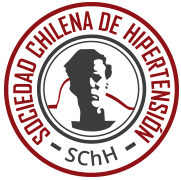El depósito de calcio, o calcificación, ayuda a endurecer los tejidos en el cuerpo. El endurecimiento del tejido es esencial para el desarrollo sano de los huesos, pero puede causar problemas de salud cuando se produce en las arterias. See complete news – www.medicalnewstoday.com
Author: SChH
Register for the conference here
Register for the conference here
Could adding calcium and magnesium to drinking water a practical way of reducing high blood pressure in people living in areas where drinking water is poor in these minerals? See complete news – www.medicalnewstoday.com
If a room or car is smoky, stay away until it has cleared. That’s the main message of research presented today at EuroHeartCare 2019, a scientific congress of the European Society of Cardiology (ESC). (1) “Avoid exposure to secondhand smoke regardless of whether the smoker is still in the room,” said study author Professor Byung Jin Kim, of Sungkyunkwan University, Seoul, Republic of Korea. “Our study in non-smokers shows that the risk of high blood pressure (hypertension) is higher with longer duration of passive smoking — but even the lowest amounts are dangerous.” More information – www.sciencedaily.com
A stressful work environment coupled with a lack of sleep can result in a threefold-higher risk of cardiovascular death in people with hypertension. Recent research looked at how stress and insomnia affected the health of employees who have hypertension, and the news was sobering. More information – www.medicalnewstoday.com
Cardiovascular diseases are no longer an exclusive or mostly male problem. On the contrary, The increase in cases in the female population is proportional to that of men, being almost a 40% Of the total cases according to the latest current studies. Precisely because of it, Our society will participate by sponsoring the 11th Cuyano Symposium of Cardiovascular Disease in women to be carried out in the city of Mendoza between the days 1 y 2 of August. We already invite the entire community and interested in registering in: https://www.eventbrite.com.ar/e/11O: https://drive.google.com/file/d/1Bh6RzLeNbUmsqquEHfHiDVBro_0nuUo6/view
20 May to 15 July 2019 INFORMACIONES MRS. Tibisay Lizcano +56 2 27535560 hipertension@smschile.cl http://EMC-Saval.cl Download poster on PDF
The May measurement month is an initiative to measure blood pressure worldwide focused on emphasizing the need to take a greater degree of consciousness with respect to blood pressure our goal: Improve world health by increasing the degree of awareness in blood pressure. Public information that is hypertension is called “blood pressure” to the physical force exerted by blood in blood vessels. It makes blood circulation possible through the body so that clean blood reaches them, With oxygen and nutrients, a…
FUENTE: Prat, H., They are blind, A., alarcon, G., Barquin, I., Escobar, E., Fernández, M., … & Varleta, P. (2017). Guidelines for ambulatory blood pressure monitoring of 24 hours. Document of the Chilean Society of Cardiology and Cardiovascular Surgery. Chilean journal of cardiology, 36(3), 264-274.

